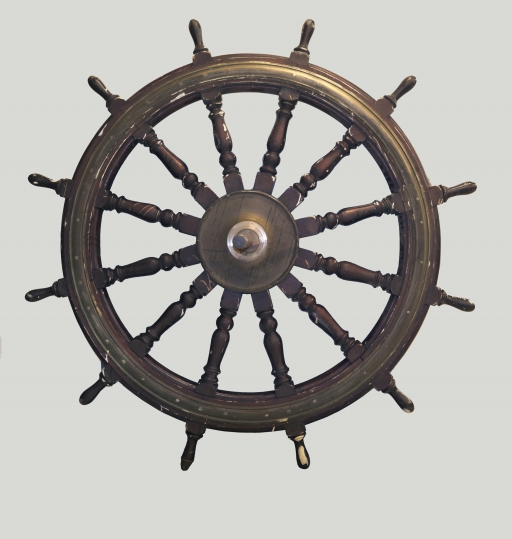One of the few surviving artefacts from an historic Canadian warship caught up in a First World War disaster is joining the Canadian War Museum’s collections in Ottawa.
The ship’s wheel from HMCS Niobe is a tangible reminder of the earliest days of the Canadian navy, and the devastating events of the Halifax explosion of 1917.
Seven crewmen from Niobe were among 2,000 people killed when a French cargo ship loaded with high explosives blew up after colliding with another vessel in Halifax Harbour.
“HMCS Niobe represents the beginning of Canada’s navy, and it played a crucial role in its development,” said Stephen Quick, Director General of the Canadian War Museum.
“In addition to being a rare and visually striking artefact, the wheel is a tangible reminder of Niobe’s place in Canadian naval history.”
HMCS Niobe was purchased from Britain’s Royal Navy in 1910 for the newly-formed Naval Service of Canada, which in turn became the Royal Canadian Navy.
Arriving at Halifax on 21 October – Trafalgar Day – Niobe made history as the first Canadian warship to enter Canada’s territorial waters.
The cruiser was used for patrol and escort duties in the opening months of the Great War. But by 1915, requiring extensive repairs, it became a depot ship in Halifax.
Rescue
In December 1917, HMCS Niobe was a casualty of the catastrophic blast which wrecked much of the Nova Scotian port.
The French ship Mont Blanc, loaded with explosives, collided with the Imo, a vessel chartered to pick up relief supplies for the people of occupied Belgium.
When fire broke out on the Mont Blanc, Niobe’s Acting Boatswain Albert Mattison led six crewmen in a rescue attempt.
As they approached in a small steamboat, the Mont Blanc blew up, killing them instantly, damaging the Niobe and devastating much of Halifax.
Albert Mattison and Stoker Petty Officer Ernest Beard were posthumously awarded Albert Medals for bravery. Their decorations are already part of the Canadian War Museum’s collection.
The blast was the biggest man-made explosion in history until the dropping of the atomic bomb on Hiroshima at the end of the Second World War.
Following repairs, Niobe resumed its duties as a depot ship but was sold as surplus after the First World War and scrapped in the United States in 1920.
The Canadian War Museum has purchased Niobe’s wheel from an American museum ahead of the 2017 Halifax explosion centenary with the support of the National Collection Fund, created to acquire and conserve artefacts of significance to Canada’s heritage.
Source: Canadian War Museum, Ottawa
Images: Canadian War Museum CWM 20160215-001d
Posted by: CN Editorial Team
